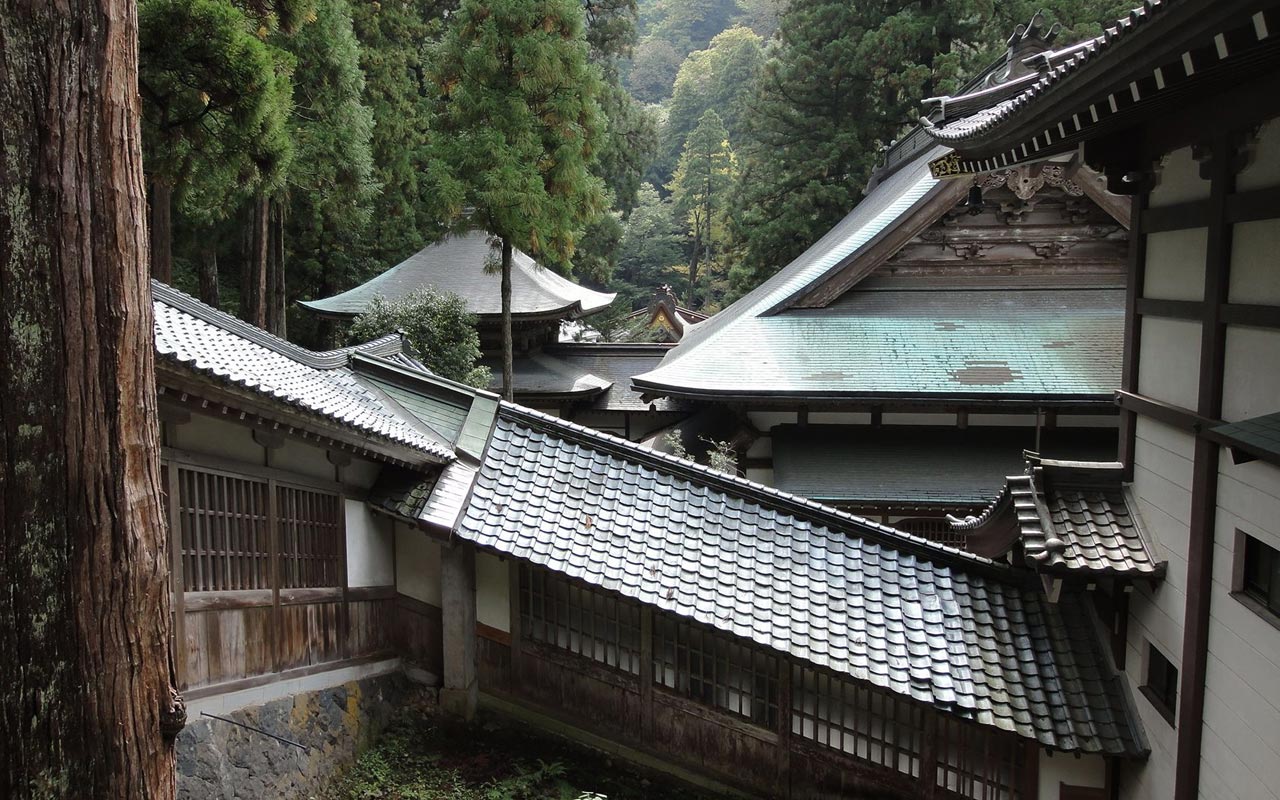Zen Buddhism Temples: History, Practice, and Significance
Visiting Zen Buddhist temples is a unique and enlightening experience that provides a glimpse into Japan’s rich cultural and spiritual heritage.
As you might know, my wife is Japanese, and we go to Japan every year. I’ve had the opportunity to visit several temples throughout Japan and witness their architecture, art, and practices firsthand.
In this article, we’ll explore the significance of Zen Buddhism temples and their role in Japanese culture and spirituality.
History of Zen Buddhism Temples
The history of Zen Buddhism, a unique Japanese school of Buddhism, temples is rich and complex, spanning centuries and multiple continents. It all began with the early origins of Zen Buddhism temples, which can be traced back to ancient China.
From there, Zen Buddhism temples continued to develop and evolve in Japan, where they became an integral part of the country’s cultural and religious landscape. Over time, these temples spread to other parts of the world.
By exploring the history and evolution of Zen Buddhism temples, we can better understand this fascinating philosophy and its role in shaping the world around us.
Early Origins of Zen Buddhism Temples
Zen Buddhism has its roots in ancient China, where it was known as Chan Buddhism.
Chan temples were established throughout the country and were known for focusing on meditation as the primary means of attaining enlightenment.
They were often located in remote, mountainous areas where monks could practice in solitude. The first Chan temples were simple wooden structures with thatched roofs, but they became more elaborate over time.
Development of Zen Buddhism Temples in Japan and China
Zen Buddhism temples continued to develop in Japan and China over the centuries.
In Japan, the architecture of Zen temples was influenced by the traditional Japanese style, with tatami floors and sliding doors.
In China, temples often incorporated Chinese culture and design elements, such as elaborate gardens and calligraphy. Both countries ‘ Zen or Chan Buddhism temples served as centers of practice and community.
Spread of Zen Buddhism Temples to Other Parts of the World
Over time, Zen Buddhism temples spread to other parts of the world as they gained popularity.
Zen temples in the United States and Europe often blend traditional Japanese and Chinese design elements with local architectural styles.
These temples serve as centers of practice and community for Western practitioners of Zen Buddhism and often offer programs and retreats for those interested in learning more about the philosophy.
Architecture and Design of Zen Buddhism Temples
Zen Buddhism temple design is characterized by its simplicity, use of natural materials, and incorporation of symbolic elements.
These temples are often built in areas of natural beauty, such as mountains or forests. They are designed to integrate with their surroundings.
In addition to being functional spaces for meditation, Zen temples are also visual representations of the religion’s core teachings and beliefs.
From using circles and squares to integrating natural materials, Zen temple design is rich with symbolism and meaning, making it a fascinating subject of study and exploration.
Traditional Elements and Characteristics of Zen Buddhism Temple Design
Zen Buddhism temples typically feature a simple, understated design, clean lines, and minimal ornamentation.
They often have a square or rectangular layout, with a central meditation hall or shrine room. Using natural materials such as wood, stone, and paper is common, and these materials are often left in their natural state or minimally treated.
Zen temples also tend to have an inward focus, with the design emphasizing the internal experience of the practitioner rather than external decoration.
Use of Natural Materials and Integration with the Surrounding Landscape
In keeping with Zen Buddhism’s emphasis on living in harmony with nature, many Zen temples are designed to integrate with their natural surroundings.
They often incorporate natural materials such as wood and stone and are built in areas of natural beauty, such as mountains or forests. The temple’s design often highlights the landscape’s natural features, such as views of the surrounding mountains or a nearby stream.
Symbolism in Zen Buddhism Temple Design
Zen Buddhism temple design often incorporates a variety of symbols and motifs, many of which are derived from Chinese and Japanese culture.
Circles, triangles, and squares are commonly used, each with significance. Circles represent infinity and perfection, triangles represent the balance between body, mind, and spirit, and squares represent stability and grounding.
These symbols convey deeper meaning and visually represent Zen Buddhist teachings.
Role and Function of Zen Buddhism Temples
Zen Buddhism temples serve as important centers for the practice and community of Zen Buddhism.
These temples offer a variety of activities, including meditation and study, designed to help practitioners deepen their understanding of Buddhist teachings and achieve enlightenment.
Additionally, Zen temples provide various services to their communities, such as counseling, retreats, and outreach programs.
In this section, we will explore the important role that Zen Buddhism temples play in the lives of practitioners and the wider community.
Zen Buddhism Temples as Centers of Practice and Community
Zen Buddhism temples are not just places of worship but also important centers of practice and community.
These temples serve as gathering places for people interested in exploring Zen Buddhism’s teachings and seeking enlightenment.
They provide a supportive and nurturing environment where individuals can come together to meditate, study, and engage in other spiritual practices.
Activities That Take Place in Zen Buddhism Temples
Zen Buddhism temples offer a range of activities for practitioners, including meditation, study, and ceremonies. Zen meditation, or zazen, is the core practice of Zen Buddhism and is the centerpiece of temple activities. Additionally, Zen temples may offer study groups to help practitioners deepen their understanding of Buddhist teachings.
Services Provided by Zen Buddhism Temples
In addition to providing spiritual guidance and support, Zen Buddhism temples offer various services to their communities.
These may include counseling services for those struggling with personal or spiritual issues and retreats and workshops designed to help individuals deepen their practice and connection to Zen Buddhism.
Some Zen temples also engage in outreach to the wider community, offering classes and workshops on meditation and mindfulness and volunteer opportunities for those who wish to give back to their community.
Zen Buddhism Temple Etiquette and Practices
Those who have never visited a Zen Buddhism temple may be uncertain about what to expect and how to behave.
This section will explore the expectations and protocols for visitors and the common practices and rituals observed in Zen Buddhism temples, such as bowing, chanting, and offering incense.
We will also briefly talk about the significance and meaning of various practices and rituals in Zen Buddhism, providing a deeper understanding of the role they play in this spiritual tradition.
Expectations and Protocols for Visitors to Zen Buddhism Temples
Visiting a Zen Buddhism temple can be an enriching experience, but following certain expectations and protocols is important. These can include dressing modestly, removing shoes before entering temple buildings, and refraining from taking photographs or making loud noises. Visitors may also be expected to bow or perform other etiquettes when meeting with monks or entering certain temple areas.
Common Practices Observed in Zen Buddhism Temples
Zen Buddhism is often associated with various practices and rituals observed in temples.
These practices include bowing, chanting, and offering incense, among others. However, it is important to note that these rituals are not essential to Zen practice. In fact, meditation is the core of Zen Buddhism, and these practices and rituals are seen as supportive elements to help practitioners deepen their meditation practice.
Nonetheless, these rituals still play a consequential role in creating a meditative atmosphere in Zen Buddhism temples. They can be a way for visitors to connect with the practice.
Significance and Meaning of Various Practices in Zen Buddhism Temples
Each practice and ritual in Zen Buddhism has its own significance and meaning.
Bowing, for example, can represent humility and reverence. At the same time, chanting can be a form of meditation and a way to connect with the Buddha’s teachings.
Offering incense is a symbol of purification and can also represent the impermanence of life. By engaging in these practices, practitioners aim to deepen their understanding of Buddhist teachings and cultivate greater awareness and compassion daily.
Famous Zen Buddhism Temples
Zen Buddhism has a rich history that is intertwined with various temples around the world.
Three notable temples in Japan are Eiheiji Temple, Sojiji Temple, and Antaiji Temple. These temples have unique features and characteristics that make them significant in Zen Buddhism’s history and culture.
Exploring these temples can provide insight into the development of Zen Buddhism and its practices.
Eiheiji Temple
Eiheiji Temple is one of Japan’s most important Zen temples, founded by the famous Zen master Dogen in 1244.
The temple is located in Fukui prefecture, surrounded by beautiful mountains and forests, providing a serene atmosphere for meditation and practice.
The temple complex consists of several buildings, including the main hall, meditation hall, kitchen, and library, all of which have been designed to promote peacefulness and simplicity.
Eiheiji Temple is known for its strict and disciplined training. Visitors can participate in various programs, including zazen meditation, sutra chanting, and vegetarian meals.
I had the chance to practice zazen in this temple on numerous occasions. It’s really an amazing place.
- Founder: Dogen
- Founded in: 1244
- Address: 15 Shihi, Eiheiji-cho, Yoshida-gun, Fukui, Japan
- Website: https://daihonzan-eiheiji.com/en/
Sojiji Temple
Sojiji Temple is one of the two head temples of the Soto school of Zen Buddhism in Japan, founded in 1321 by Keizan Jokin, a disciple of Dogen.
The temple is located in Yokohama, Kanagawa Prefecture, and it was destroyed during World War II. After the war, the temple was reconstructed with modern facilities but still retains its traditional and historical features.
Sojiji Temple is famous for its unique architecture and Zen gardens, which include a large pond and several stone bridges. Visitors can participate in various activities, such as meditation, sutra chanting, and calligraphy.
- Founder: Keizan Jokin
- Founded in: 1321
- Address: 2-1-1 Tsurumi, Tsurumi-ku, Yokohama, Kanagawa, Japan
- Website: https://www.sojiji.jp/english/
Antaiji Temple
Antaiji Temple is a small Zen temple in Hyogo Prefecture, Japan, founded by Oka Sotan in 1924.
Kōdō Sawaki, one of Japan’s finest Zen masters, assumed the role of the fifth abbot of Antaiji in 1949 and transformed it into a hub for Zazen practice.
The temple is known for its austere and simple lifestyle, emphasizing zazen meditation and daily work as a spiritual practice. The temple buildings are made of natural materials, such as wood and clay. The surroundings include rice fields, mountains, and forests.
Antaiji Temple allows visitors to experience traditional Zen practice in a peaceful and natural setting.
- Founder: Oka Sotan
- Founded in: 1924
- Address: 100 Yamanouchi, Shinonoi-cho, Kako-gun, Hyogo, Japan
- Website: https://antaiji.org/en/
Conclusion
In conclusion, Zen Buddhism temples have a rich history and culture that continue to thrive in modern times.
From its early origins in China to the spread of temples worldwide, Zen Buddhism temples have a unique design, practices, and rituals that reflect its core principles of mindfulness and awareness.
Visitors can learn about the teachings and experience a sense of community through meditation, study, and various services these temples provide.
It is essential to recognize the significance of Zen Buddhism temples in contemporary society as a source of spiritual guidance, personal growth, and cultural appreciation.
As such, we encourage readers to visit and learn more about Zen Buddhism temples to deepen their understanding and appreciation of this ancient tradition.

